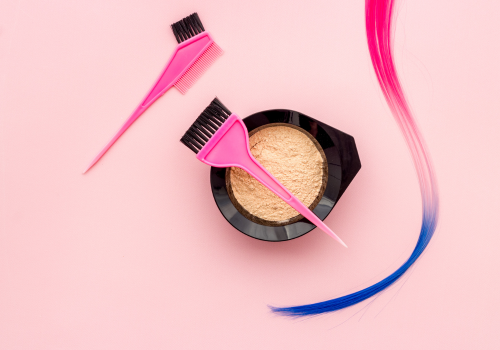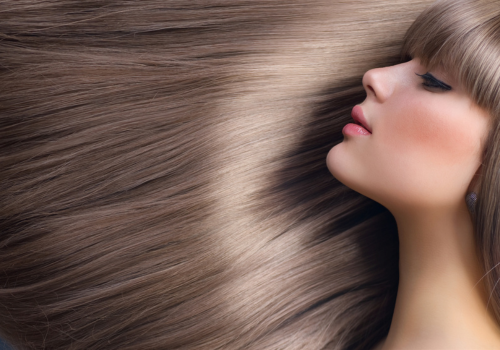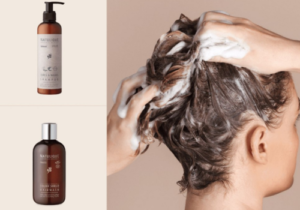Introduction to hair coloring
Hair coloring is an ancient practice dating back millennia, used to express individuality, follow fashion trends or simply to change one's look. Today, hair coloring has become an integral part of the personal care routine for many people around the world. Whether to cover gray hair, add subtle highlights or adopt bold shades, hair color offers an infinite range of possibilities for expressing personality and style.
Hair coloring involves the use of chemicals to modify the hair's natural color. These products can be permanent, semi-permanent or temporary colorants, each offering different results in terms of durability and color intensity. Before embarking on hair coloring, it's important to understand the different types of colorants available on the market and to choose the one that best suits your needs and preferences.
Hair coloring can be carried out at home or by a hairdressing professional, depending on the complexity of the process and the desired results. For those who choose to color their hair at home, it's essential to carefully follow the instructions supplied with the product and take precautions to avoid potential mistakes, such as choosing the wrong shade or applying the product incorrectly.
In addition, it's important to consider the current condition of your hair before coloring. Damaged or weakened hair may react differently to coloring chemicals, leading to unpredictable results or further damage. In such cases, it may be best to consult a hairdressing professional for advice on the best approach to take.
Choosing the right color and preparation
When you're considering coloring your hair, it's essential to choose the right color and prepare properly for the best results. Here are a few points to consider to make the right choice and prepare yourself effectively for hair coloring:
Determine your color goal: Before choosing a shade, think about what you want to achieve. Do you simply want to revive your natural color, cover gray hair, or opt for a bold transformation with a completely different hue?
Take into account your skin tone and natural color: Your hair color should compliment your skin tone and color. Warm tones are generally better suited to warm complexions, while cool tones are better suited to cool complexions. What's more, it's important to choose a color that harmonizes with your natural skin tone to achieve a realistic result.
Consult a professional: If you're unsure about your choice of color, or if you're considering a major makeover, it may be wise to consult a professional hairdresser. They can advise you on the best options based on your hair type, skin tone and personal preferences.
Do a color test: Before committing yourself to a full color treatment, it's a good idea to do a color test on a small section of hair. This will allow you to see how the color reacts to your hair and whether it matches your expectations. Be sure to follow the product instructions carefully and respect the recommended development time.
Prepare your hair: Before coloring, make sure your hair is clean and free of styling product residue. Avoid washing your hair just before coloring, as natural sebum can help protect the scalp. Also, apply a protective cream or Vaseline along the hairline and over the ears to avoid color stains on the skin.
Protect your skin: When applying color, wear gloves to protect your hands and avoid staining. If you have sensitive skin, apply a barrier cream around the hairline to avoid irritation.

Hair coloring techniques and differences between salon and home
In the field of hair coloring, there are a variety of techniques used to achieve different results, whether in a professional salon or at home. These techniques vary in complexity, precision and desired effects. We'll explore the different coloring techniques and the differences between salon and home procedures.
Salon coloring :
Hair salons offer a range of coloring services, from simple tints to advanced coloring techniques. Professional hairdressers are trained to master these techniques and are equipped with the tools needed to achieve precise, long-lasting results. Here are some of the coloring techniques commonly used in salons:Full color : This technique involves applying a uniform color to the entire head of hair, completely covering roots and existing strands.
Highlights and balayage : These techniques add highlights or color contrasts by strategically selecting strands of hair to color. Balayage creates subtle, natural effects, while highlights offer more pronounced color.
Ombré and sombré : These coloring methods create a gradient of color, from darker to lighter, along the length of the hair. Ombré creates a sharper contrast between roots and ends, while sombré offers a softer transition.
Home coloring :
Home hair coloring has become popular due to its convenience and lower cost compared to salon visits. However, it's important to note that the products available for at-home hair coloring may differ from those used in salons, which can influence results. Here are some aspects to consider when coloring at home:Ease of use : Home coloring kits are designed to be simple to use, with step-by-step instructions. However, it's essential to follow the instructions carefully to avoid mistakes.
Limited choice of techniques : Unlike hair salons, at-home coloring options are often limited to full tints or balayage kits.
Less professional results : Although home coloring can produce satisfactory results, it may not offer the same precision and durability as salon coloring by a professional hairdresser.
Post-color care and precautions
After coloring, it's crucial to take care of your hair to maintain color and health. Use shampoos and conditioners specially formulated for color-treated hair. Avoid excessive washing to prevent fading. Protect your hair from heat damage by limiting the use of heated tools. Moisturize your hair regularly with nourishing hair masks. Avoid prolonged exposure to the sun to prevent fading. Finally, space out color touch-ups to minimize chemical damage.

Hair colouring FAQs
Q: Does hair coloring damage the hair?
A: Hair coloring can potentially damage hair, especially if applied incorrectly or if harsh products are used. However, by choosing quality products and following instructions carefully, damage can be reduced.
Q: How long does hair color last after coloring?
A: The durability of hair color depends on the type of colorant used, the frequency of washing and post-coloring care. In general, permanent coloring lasts longer than semi-permanent or temporary coloring.
Q : Can I colour my own hair at home?
A: Yes, it is possible to color your hair at home using commercially available hair color kits. However, it's important to follow the instructions carefully and do a color test beforehand to avoid mistakes.
Q: How can I prevent hair color fading?
A: To prevent hair color fading, we recommend using shampoos and conditioners specially formulated for colored hair, avoiding excessive washing, limiting sun exposure and using thermal protection products when using heated tools.
Q: Should I consult a professional about coloring my hair?
A: If you're unsure about coloring your hair, or if you're considering a major makeover, it may be wise to consult a professional hairdresser. They can advise you on the best options based on your hair type, skin tone and preferences.
Conclusion
In conclusion, hair coloring is a popular practice that offers many possibilities for expressing your personality and style. Whether to cover gray hair, revive an existing color or dare a bold transformation, hair coloring can add a fresh touch to your look. However, it's essential to choose the right products, take the necessary precautions and follow care instructions to preserve the health and beauty of your hair. Whether you opt for at-home or professional coloring, the important thing is to feel good about yourself and enjoy the results. With the right care and preparation, you can achieve healthy, radiant color-treated hair. Don't hesitate to consult a professional hairdresser for personalized advice and venture into the world of hair coloring with confidence and creativity.





